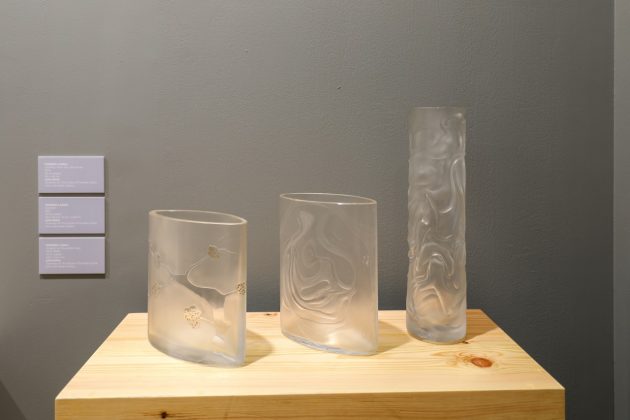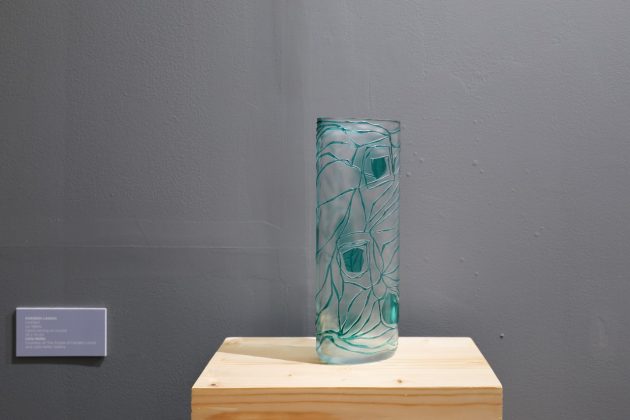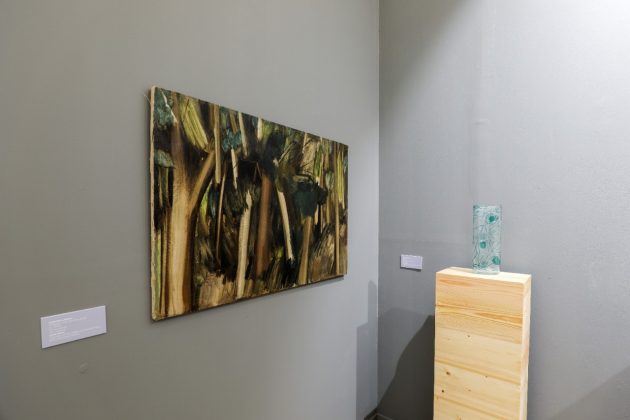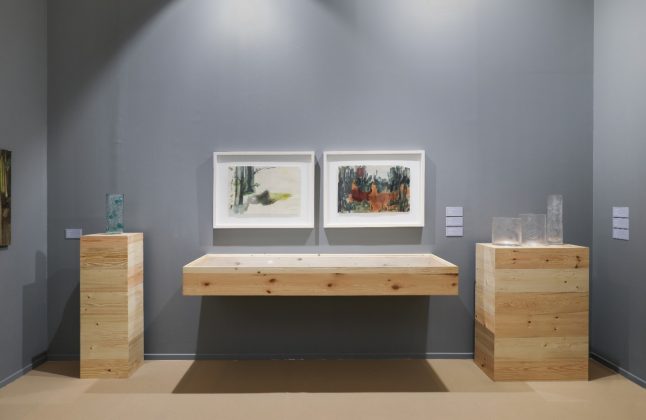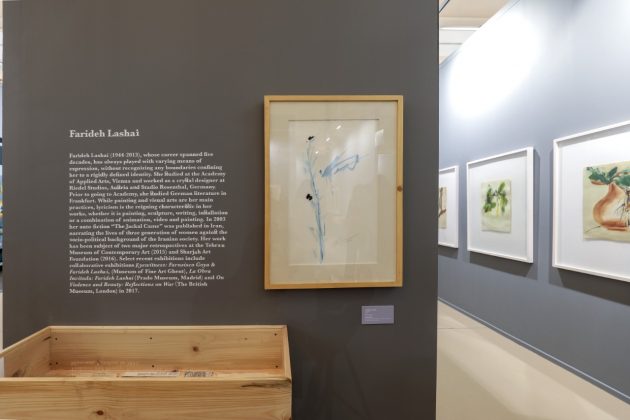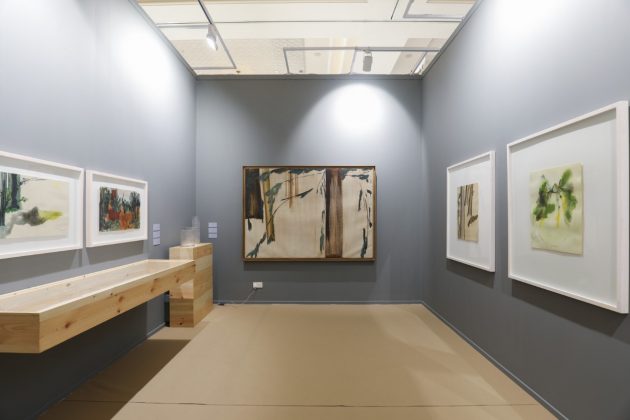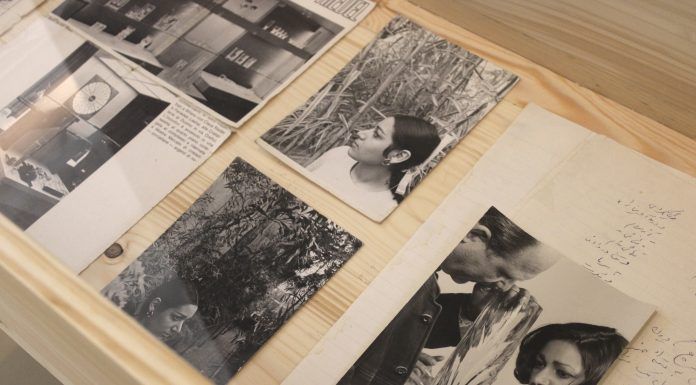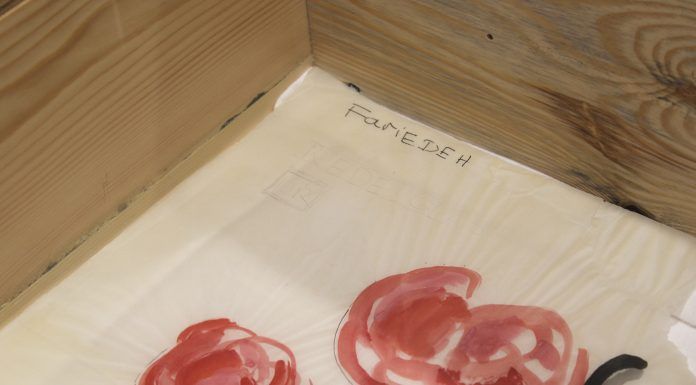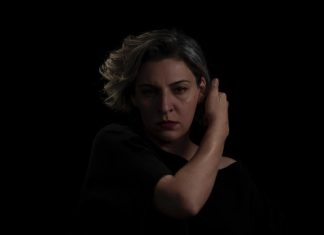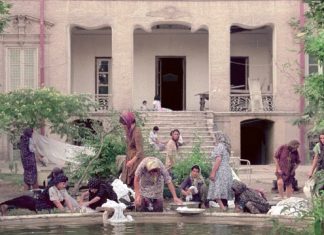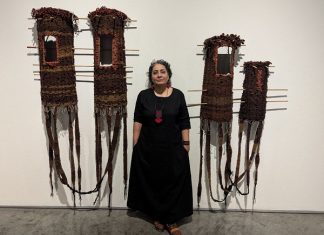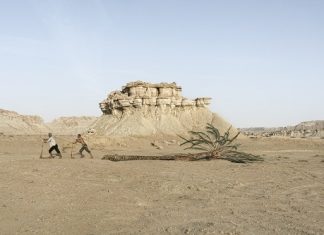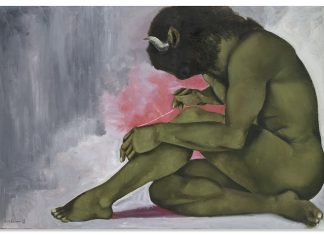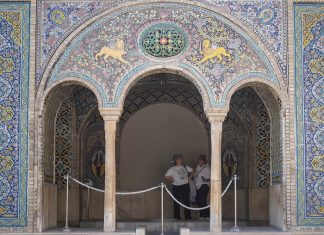By Rawaa Talass
Nine years ago, Iran lost one of its most prominent female artists, Farideh Lashai, after a long battle with cancer. Yet Lashai’s memory lives on.
Her abstract works were a highlight of this year’s Art Dubai fair, which ended March 13 and presented Lashai in a section dedicated to 20th-century Middle Eastern masters.
The display was a collaboration between Leila Heller Gallery and the Estate of Farideh Lashai. The exhibited works consisted of two large oil paintings and eight oils on paper. Prices ranged from $30,000 to $500,000.
[aesop_image img=”https://kayhanlife.com/wp-content/uploads/2022/03/Farideh-Lashai-at-Art-Dubai-2022-4.-Image-supplied..jpeg” panorama=”off” credit=”©Leila Heller Gallery and the Estate of Farideh Lashai.” align=”center” lightbox=”on” captionsrc=”custom” captionposition=”left” revealfx=”off” overlay_revealfx=”off”]
The artist was represented at the fair by her daughter Maneli Keykavoussi. Since 2015, Keykavoussi has run the Lashai Foundation, whose mandate is preserving the artist’s legacy. Lashai’s artworks are in the collections of Tehran Museum of Contemporary Art, the British Museum, the Pompidou Center in Paris, and Deutsche Bank.
In an interview with Kayhan Life at the fair, Keykavoussi remembered what a caring and nurturing person her mother was.
“Farideh was primarily, primordially a mother,” said Keykavoussi. “She would mother her mother, mother the cats. She was the most amazing mother to me, but also to everybody else.”
“When she was passing away, she opened her eyes and told me to go to our neighbor, who had had an operation that day,” Keykavoussi added. “She [Farideh herself] was on her death bed. That’s how much she cared.”
Born in Rasht in 1944, Lashai showed an interest in art during her childhood and started to paint at the age of 10. Such was her skill that those close to her called her a ‘professional painter’ even in her formative years.
When Lashai was 18, she left Iran to study German literature in Frankfurt and glass design in Vienna.
Keykavoussi remembered her mother’s diligence and devotion to her craft. “She would work from early morning, in a very Germanic way, until the sun went down, because she needed the natural light for her work,” remarked Keykavoussi.
The Art Dubai exhibition featured colorful sketches of flowers — drawings used to design the “Rosenthal vase” at Studio Rosenthal in Germany, where she worked as a crystal designer. Some of Lashai’s vases were also included, featuring hand carvings on crystal.
The display seemed like a mini-museum show, with its archival imagery and documents from the 1960s and ’70s.
Lashai’s artworks are filled with trees and flowers and depictions of nature. There is something delicate yet brutal in her painting; at times, the dabs of paint resemble deep wounds.
Her artworks are popular with collectors, and her market remains strong. As Kayhan Life was interviewing Keykavoussi, a Western collector stopped by to inquire about the price of a 1975 abstract work.
Art Dubai Regional Director Hala Khayat, a Syrian art expert who was previously part of the Christie’s Dubai team, recalled the days of auctioning artworks by Lashai, whom she described as an “important late modernist” artist.
“I first came across her works in the early 2000s,” Khayat told Kayhan Life. “She’s like the queen of abstraction, with amazing brushstrokes.”
“You can tell it’s someone very strong,” Khayat said. “And then you see that she was this very petite, soft-spoken lady.”
For more information on Art Dubai: www.artdubai.ae

